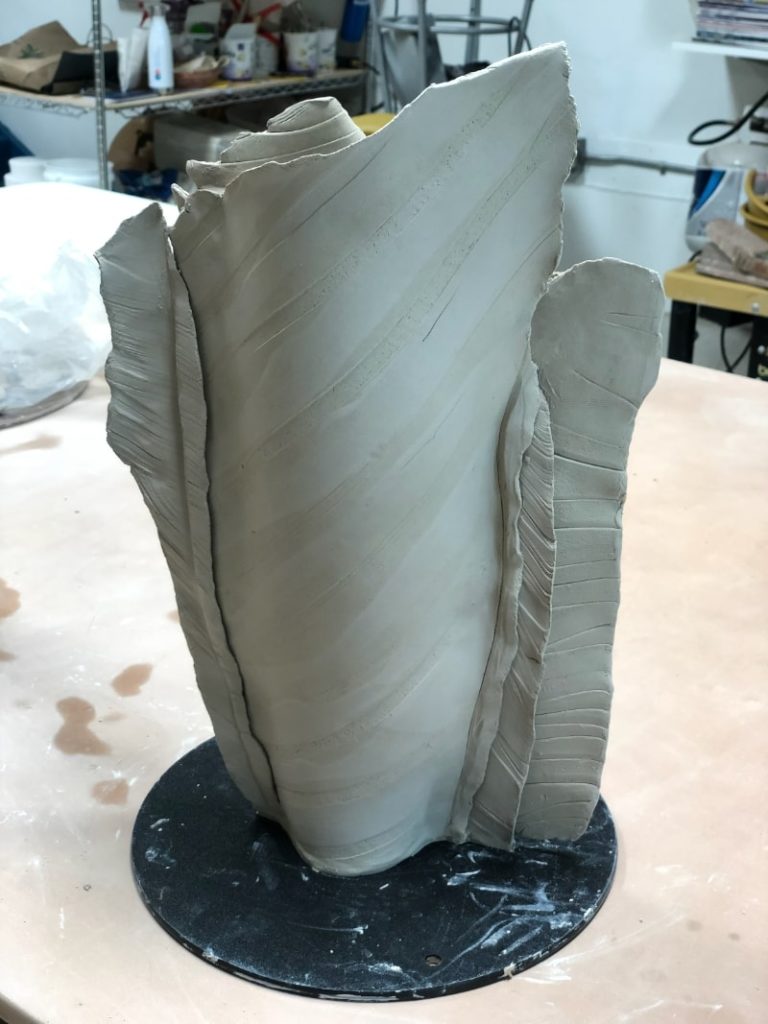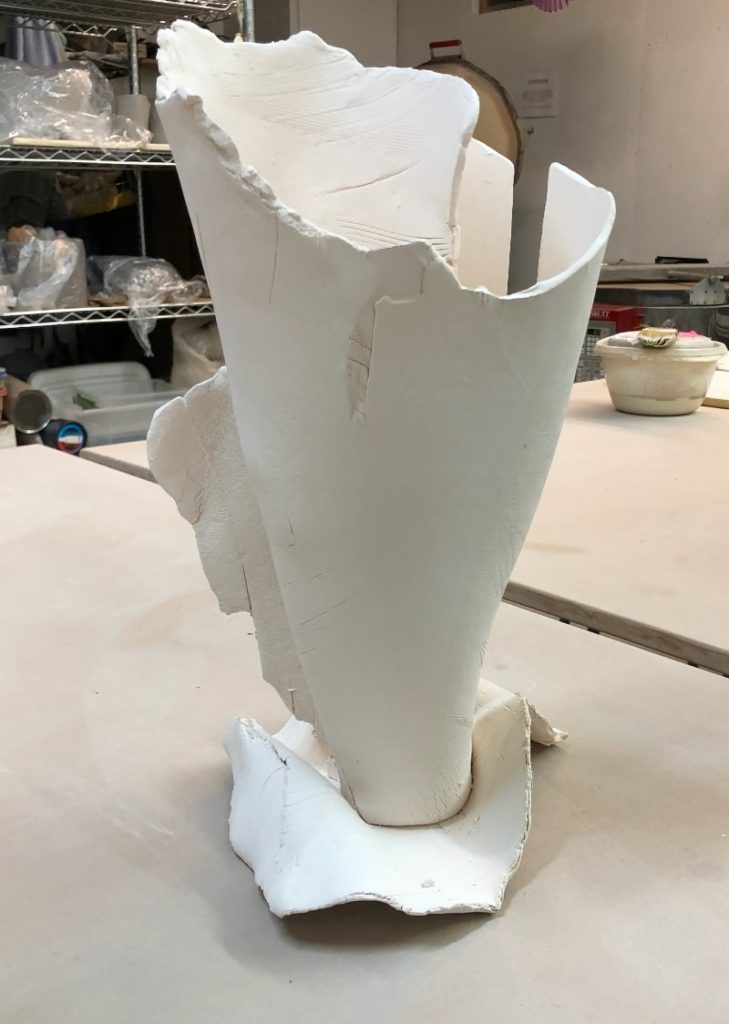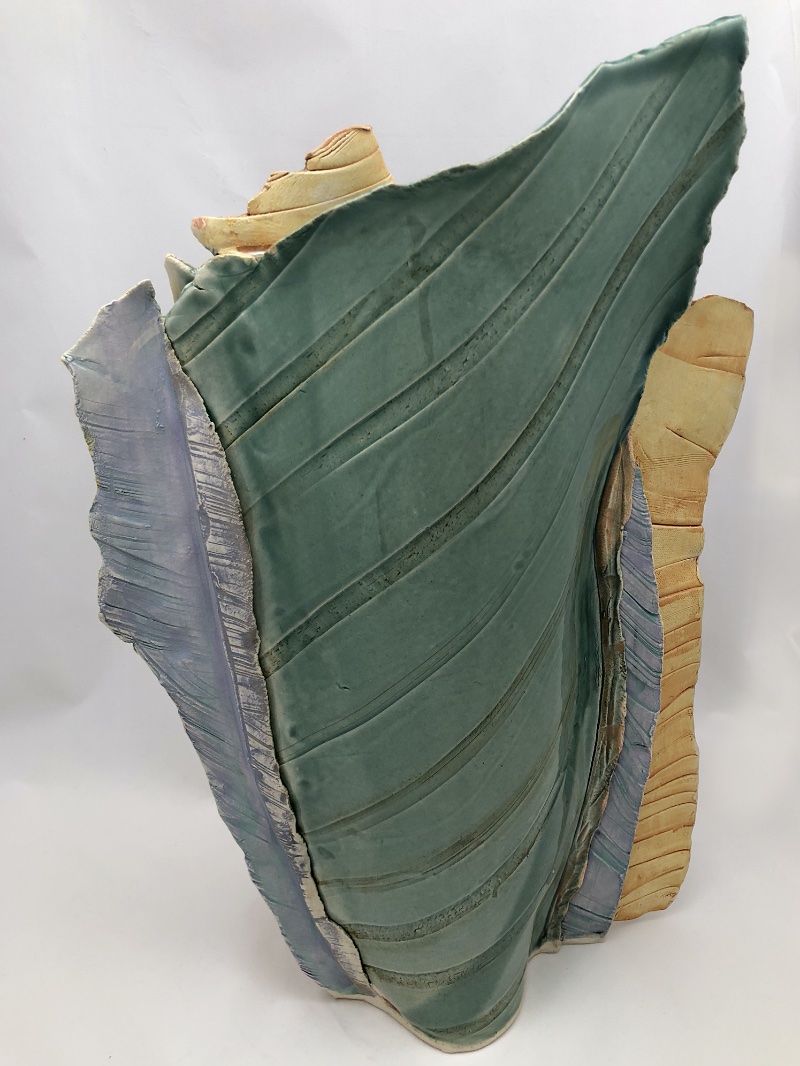Creating in clay or ceramics takes a couple of basic concepts or skills – throwing on the potter’s wheel or handbuilding. This term simply means that other forming methods were used that did not include the pottery wheel, ( or at least not exclusively the pottery wheel).
There are many methods to choose from. Using coils is a very popular method and was used extensively in very early forms of pottery. It may be that the style and movement of forming were derived from basket making. One of the most exciting things about ceramics is it takes so many forms and can be used in so many ways.
Working with slabs of clay is just one of those. Forms from this method can be very sculptural and not so functional. I think there is greater freedom to create new ideas and forms when they are not limited by the wheel. But you can also create beautiful plates, cups, vases, bottles and many functional forms.
Usually a block of clay is stretched by hand and then rolled through a slab roller or with a rolling pin. Maybe I was a pastry chef in a former life, but I love working with slabs of clay and the rolling pin.
To achieve anything that will stand up, it takes time and different stages of the clay. Wet, slightly drier, leather hard, and bone dry are all terms used to define both how moist and how stiff a slab of clay might be. If you can find ways to work the clay in all of these stages, you can create surprising forms.
Additionally, working in slab clay often requires support of the slabs during part of the process. The support comes from draping wet slabs down into molds that cradle and support a curve, or draping over a stiff form, for the same result. After a short time the clay is firm enough to hold its shape and be worked in another way, or joined to other slabs by creating seams. It can be slow going. Becoming a better judge of what the clay can do, instead of what will cause a slab of clay to slump, crack, or fall apart is essential to working with satisfaction – instead of exasperation.
I have found this kind of handbuilding suits my ideas and forms. I love working this way and I enjoy the risk taking that will lead me onward to new ideas, even if a few of them fail in the process.

vase – leather hard clay 
vase – bisque fired

